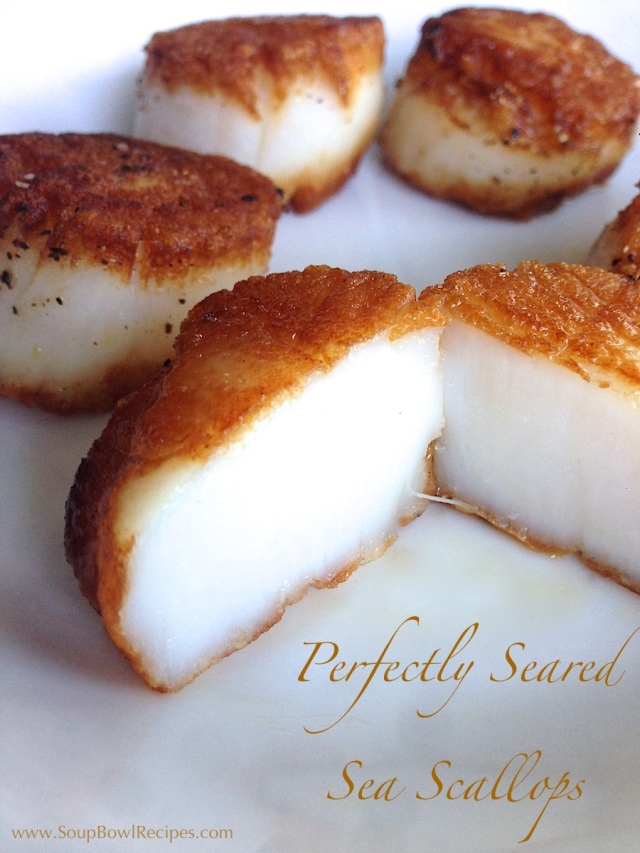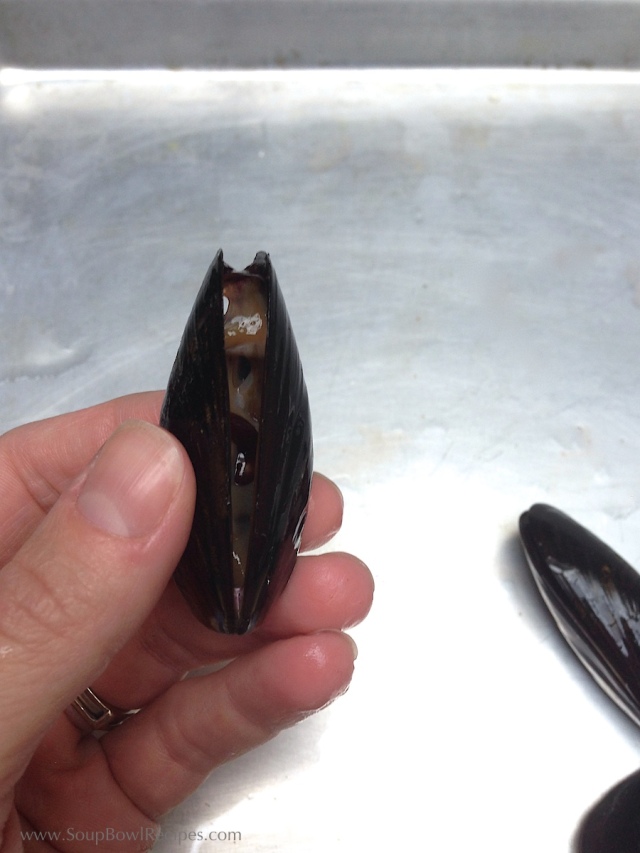Well hello stranger, long time no see. As you may or may not have noticed, I took quite a lengthy hiatus from blogging (roughly a year-and-a-half-ish), and although I never stopped cooking and experimenting with food, I felt that I just needed a little break from writing. But I’m back! Well, at least for today. You see, last night I made an awesome paella dish, then I went and bragged about it on Facebook like an idiot, and as a result, I was asked to share the recipe. So…that’s what I’m doing.
And why paella? Well, Texas has been experiencing some unseasonably chilly and drizzly weather this week, and for the past few days I’ve had this nagging itch to make some good old fashioned, soul-warming seafood. So yesterday, after dropping my daughter off at preschool, I set out to find the freshest fish Central Texas had to offer – not all that much, as it turns out (shocker!). Next, I polished off my trusty and slightly neglected paella pan, then set to work. It was an easy enough task, and yielded a delicious reward that did, in fact, warm my soul (however, my headache this morning would say that it was the two bottles of wine we drank that made me so toasty.)
But, before I get to the recipe, I feel that I need to issue a PSA (Parental Service Advisory): My daughter, who loves fish of every variety, was a huge fan of this dish but insisted on eating everything (including each. individual. grain. of. rice) with her tiny, two pronged seafood fork. She also felt the urge to flex her biceps every time she ate a mussel (because, duh, they’re muscles). No joke. Dinner took well over 90-minutes with a great deal of patience on my part (hence the two bottles of wine). So if you have a quirky child as I do, consider yourself warned.  Alright, without further adiue…
Alright, without further adiue…
Seafood & Andouille Paella
Serves 6, Recipe adapted from Fine Cooking
- 1 pinch (~ ¼ tsp) crumbled saffron threads
- 1 (8 oz.) bottle of clam juice
- 3 Tbsp olive oil
- 1 small yellow onion, peeled and halved through middle leaving the root ends attached
- 2 Roma tomatoes, cut in half horizontally (not through the stem)
- 1 Tbsp diced pimentos (from a jar)
- 4 cloves garlic, minced
- ½ tsp Hungarian sweet paprika
- ¼ tsp smoked paprika
- 1¾ cup long grain white rice (preferably Spanish bomba)
- 5 cups low-sodium chicken (or fish) stock, divided
- 2 bay leaves
- Kosher salt and fresh black pepper, to taste
- 12 large, uncooked shrimp, peeled & deveined
- 12 mussels, cleaned & debearded (*see How To at the end of this recipe)
- 12 clams, scrubbed clean
- 6-8 squid, cleaned and sliced into ½-inch thick rounds
- ½ lb Andouille sausage, sliced into ½-inch coins
- 8-12 large sea scallops
- ¼ cup grapeseed oil (or another high-heat oil such as avocado, peanut, or safflower)
- 2-3 Tbsp chopped fresh Italian parsley
SEAFOOD NOTE: I always add calamari to my paella, but because Texans aren’t big on squid, I wasn’t able to find a grocery store within a 70-mile radius that carries cephalopods, therefore, I omitted them. Nonetheless, if you’re able to get fresh squid, I highly recommend adding them to your paella (roughly 10-12 squids; tentacles and bodies separated, body sliced into ¼–inch rings).
INSTRUCTIONS:
Make the saffron-clam broth: In a small saucepan set over medium heat, toast the saffron threads until fragrant, about 1 minute. Remove from heat and use the back of a spoon to crush saffron as finely as possible. Return pan to heat, add clam juice and bring to a boil, then immediately remove from heat, and set aside to infuse.
Make the sofrito: Using a box grater, grate the onion halves over the largest holes and set aside. Next, grate the two tomatoes (4 halves), all the way down to the skin. Set tomato pulp and juices aside and discard skins.
Add olive oil to a paella pan (or large, straight sided skillet) and set over medium heat. Once the oil is hot, add puréed onion and cook, stirring occasionally, until softened and just beginning to darken. Add tomato purée, pimentos, garlic, both paprikas, ¼ tsp salt, and fresh cracked pepper. Cook, stirring often, until the mixture (called sofrito) becomes dark red and very thick, about 20-30 minutes.
Make the paella: When the sofrito is done, add the rice to the pan and cook, stirring constantly, for 1-2 minutes until the rice is fully incorporated into the sofrito. Spread the rice mixture evenly over the bottom of the pan and increase the heat to high. Slowly, so as not to disturb the even layer of rice, pour in saffron-clam broth and 4 cups of the chicken (or fish) stock; reserve remaining cup of stock. From this point on you do not want to stir the rice as it’s important that it developed a crispy brown layer on the bottom. Nestle the bay leaves into the broth and bring the broth to a boil, then immediately adjust the heat so that the paella maintains at a vigorous simmer. Continue to simmer until much of the broth is absorbed, about 10 minutes.
Arrange the mussels and clams deep in the rice, distributing them evenly. Lower the heat so the broth maintains a more moderate simmer, and after another 5 minutes, arrange the shrimp, squid, and sausage in the pan, pushing them down into the rice. Cover with tin foil and continue simmering until all of the liquid is absorbed and the rice is tender but still firm (taste a few grains below the top layer), about 10 minutes. If at any point the broth seems to be evaporating too quickly, reduce the heat slightly and add a little more broth, ¼ cup at a time as needed.
Sear the scallops: While the paella cooks, sear the scallops, like so… 
There are a couple very important, nay essential, things to remember when trying to achieve the perfect sear on your sea scallops, 1) The scallops should be very dry: Use a paper towel to gently press on both sides of the scallop to extract any extra moisture it may be holding, and 2) High heat is where you want to be: In order to get a nice brown crust on the outside, yet retain a soft, creamy center, you’re going to need to crank the temperature knob up as high as it will go (not to medium-high or almost-high), it absolutely needs to be on HIGH-high.
After drying both sides of the scallops with a paper towel, generously season with sea salt and fresh cracked black pepper. 
Set a heavy skillet (preferably cast iron) over HIGH heat and add enough grapeseed oil (or another high-heat oil) to coat the bottom of the pan. You’ll need to wait until the oil is hot before placing the scallops in the pan. You can test this by flicking a drop of water into the oil, if it pops, it’s ready. Working in several batches, carefully place 4-5 scallops in the pan (being careful not to overcrowd them), and let them sear, completely undisturbed, for exactly 90-seconds, then flip. If the scallops are sticking and don’t want to lift easily from the pan, wait another 5-10 seconds until they lift easily. Flip and cook for 90-seconds on the second side, then transfer to a paper towel-lined plate and repeat with the remaining scallops. (You may need to add additional oil between batches.)
 (Seriously, YUM!)
(Seriously, YUM!)
Serve the paella: Once the rice, shrimp, and squid have cooked through and all the mussels and clams have opened, nestle the seared scallops evenly throughout the dish. Taste the rice for seasoning and add more salt and pepper if needed. Before serving, check that the rice has caramelized on the bottom of the pan by using a spoon to feel for resistance. If the rice lifts easily then it’s not carmelized enough. In that case, increase the heat to high and listen for a popping and crackling sound, about 1-2 minutes, being careful not to burn the rice. Try the spoon test again, and remove pan from heat once the rice resists slightly when being lifted from the pan and has a nice golden brown crust on the bottom.
Place the paella pan on a heat-resistant surface, cover, and let rest for 5-10 minutes. Sprinkle chopped parsley over the paella and serve with a bottle (or two) of Spanish red wine.
*HOW TO Clean and debeard a mussel:
When you get your mussels home from the fish market or grocery store, spread them out on a large baking sheet, and check that each mussel is tightly closed, discarding any mussels with cracked or damaged shells. If you find a mussel that is slightly open, gently tap in on the counter.
 If the mussel is fresh, it should close within a minute or two, discard any mussels that don’t close.
If the mussel is fresh, it should close within a minute or two, discard any mussels that don’t close.
Place your mussels in a colander set in the sink. Under running cold water, gently scrub the outsides of the shells to get rid of any remaining dirt and bits of stringy things (I’m pretty sure that’s not the technical name for that). If you’re not ready to cook the mussels yet, place them in a bowl and cover with a damp paper towel. You can store your mussels in the refrigerator like this for up to 24 hours. The same applies for your clams as well.
You’ll notice that most of the mussels have a little clump of brown fibers poking out of the shell, this is called the “beard” (also not the technical name, however, I looked it up for you and it’s called the byssus thread, in case you’re a stickler for details). 
Using a clean paper towel, grab ahold of the beard.
Using a little wiggling motion, pull the beard downward and out of the shell, like so…
Discard beard and repeat with remaining mussels. (The beard isn’t harmful, just a little unpleasant to eat, so don’t sweat it if you miss a few.) Also note that removing the beard kills the mussel, so you’ll want to debeard them just prior to cooking in able to retain their freshness.


Looks phenomenal!!! I’m ready for more blogging 🙂
LikeLike
Any requests for what you’d like to see next? My rusty brain is still warming up to the idea of blogging again.
LikeLike
Woohoo! You’re back! Great post! Looking forward to the next one in 2018! 😉
LikeLiked by 1 person
Har, har.
LikeLike
So happy to see you’re back! This looks delicious!
LikeLiked by 1 person
So good to see you back out here Miss Emily. Have missed your blog.
LikeLike
Wow. that looks so good and you know I don’t like seafood! Look forward to future recipes.
LikeLike